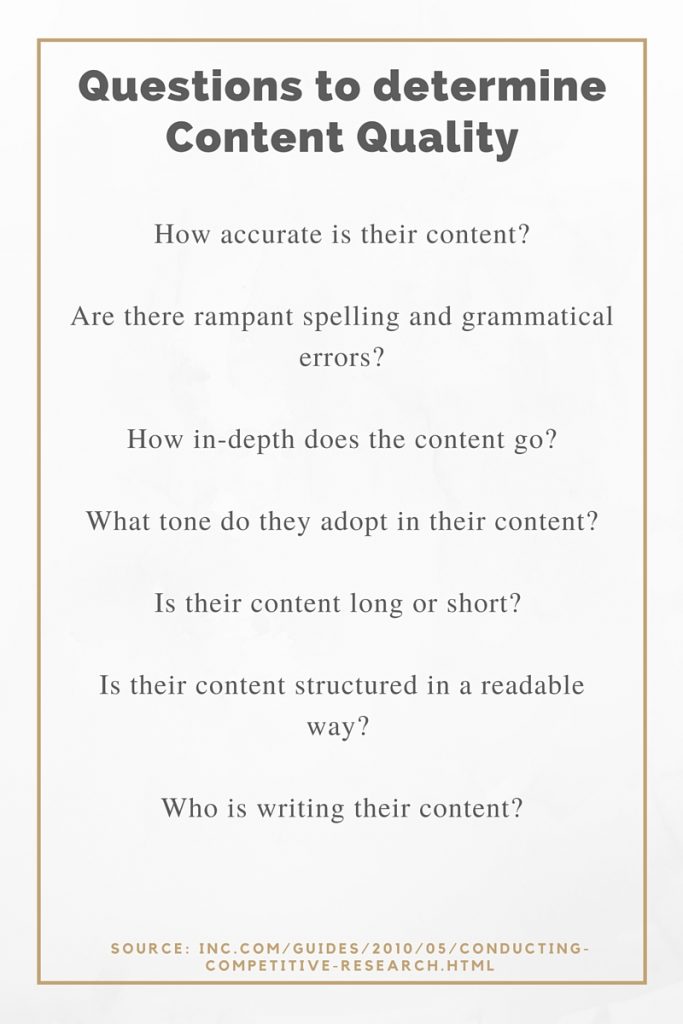This is the first article of a two part blog post:
- Step by step guide to research your competitor’s games
- Competitor analysis – Example
When you ask game developers who their direct competitors are, they can usually rattle of a list with few anecdotes about important aspects, how many copies sold, etc. But what’s missing are key points about what made them financially successful in the first place.
I hope that this will be somewhat a template while looking at competitors to help you with promoting your game.
Competitive analysis helps finding out why developers before you landed financially successful hits and were able to continue to do what they love. It might take time doing it on your own but it will help you set a realistic content strategy to compete and overtake competitive games you have out there.

Questions before you can start
You have to ask the right questions before doing a competitor analysis, the following list covers most of those important questions:
- Who are your competitors?
- How similar is their game to yours?
- What were their past strategies?
- How aggressive are they on the advertising front?
- Do they share the same strengths and weaknesses?
- How big of a “threat” are they actually to you?
Answered those questions? Good let’s move on to.
-
Finding where the content is located
This is the poking around part, looking for any obvious source of information about developer or game. Different forms can be: Blog/News page, Social Media channels, IndieDB profile, Steam page, Itch.io page, podcasts, FAQs or press kits. Basically any frequently updated page supplied with information, images or assets of the game or developer.
-
The actual content analysis
Now we come to the fun but sadly time intensive part. The content analysis will give you a good indication how you stack up to your competitors marketing effort.
What is the quantity of each content type published? Again, content type can mean anything, a YouTube trailer, gamedev blog post, Images of the game posted on Social Media, etc.
What about the Frequency of each content asset? How many blog posts per week? How frequent is the Social Media handle posted on? While doing this you can have a brief look at their engagement (likes, shares and comments) to see if they are somewhat successful with their rhythm but more on that later.
How does the distribution of topics discussed look like? Get a general idea what topics they covered besides purely talking about the game. For example as you go through these posts and videos you might see various topics covered repeatedly, let’s say a zombie survival game with reoccurring topics like: Zombie AI, Environmental Screenshots and what PVP will look like.
To help you with those questions, I suggest a simple Excel sheet similar to this:
| Content form/Channel | Frequency | Topics covered |
| Blog | 1 per week | AI, Imagery |
| 2 per day | Game Assets/ General Info | |
| YouTube | 1 per month | Trailer/Teaser/Commentary/podcast |
Thankfully competitor analysis are less labour intensive than in other industries if we don’t look at AAA games, even more successful indie games won’t have widespread content pages and formats since e-books, email newsletter, etc. aren’t as well received by gamers.
-
Rate the quality of content
After looking at all content types and frequencies you should be able to see an overarching message and with that how good of a job the content is doing to convey that message.
Again a couple of questions to help you figure out the content quality:

You’ll also be able to rate the quality by looking at how readers share and interact with content. What topics were resonating the most? What is getting the most shares (and on which platform?)?
How is the developer responding to feedback (community management)?
-
Social Media integration
Since Social Media is an inevitable medium for content creation, it is self-explanatory how important an integration of Facebook, Twitter and co is.
Also, this won’t take as much time as the steps before but is nevertheless important.
Visit the following Social Media Channels to determine if your competitor is actually present:
- YouTube
- IndieDB
- Reddit (in form of a subreddit)
- And forums like Gamasutra, tigsource, etc.
Some of those Channels aren’t as important (like Instagram or LinkedIn) as others but should still be double-checked to see if your competitor drives in traffic from those sites.
Check how many followers each channel has, how frequently the posts go out, what kind of posts go out (if it is different for each channel) and how frequently fans engage with posts.
Sadly many developer post only once every fortnight and forget how much reach content can get just because you promote it multiple times on your social channels.
-
Applying findings to your game’s marketing campaign
Now that you know where you stand alongside your competitors marketing effort, it is up to you to decide what you would have to do to keep up with a similar pace or even surpass them.
Is it publishing volume that is outpacing you or simply the great quality of content published and promoted?
Addressing now weaknesses in your content strategy/promotion is key to gain at least a similar level of success. Of course no one wants to be a copycat but when it comes to having a solid content plan in place there is no shame in looking at what others did to be successful with their game.
Important thing here is to look at your social metrics of every channel and see what is working for you and what doesn’t.
Tools you can use along the way
If you are interest in doing your own competitor analysis I suggest using couple of free tools to save time. A good read for this is Logan William’s “Free Tools to Help You Research Your Competitors’ Games”.
Notes and remarks
If you are interested in a more detailed outline of a competitor analysis I urge you to visit Hubspot and their Competitive Analysis Guide.
Additionally the competitive research suggests also looking at SEO of competitors but since that is a minor factor for gamedevs I didn’t include a detailed explanation, if you want to find out more on how to research SEO of competing developers, check this MOZ article out


One Comment on “Step by step guide to research your competitor’s games”
Pingback: Competitor Analysis - Example for Game developers